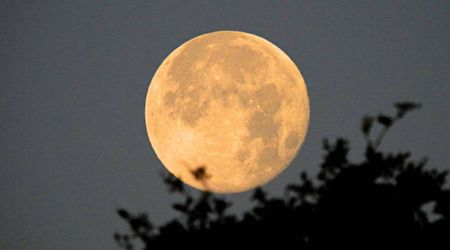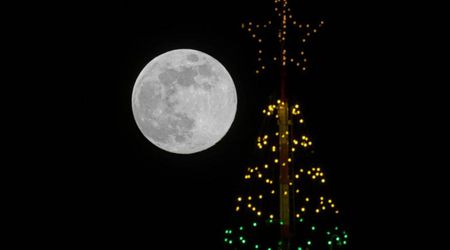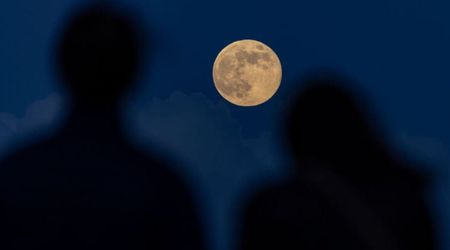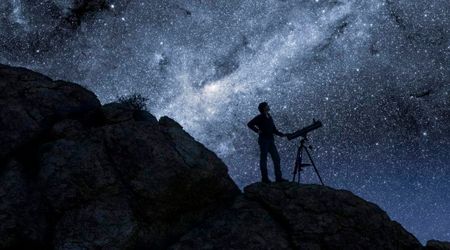Unique 'smiley face' will appear in the night sky on April 25 — NASA reveals when to watch

Space enthusiasts looking forward to magical celestial occurrences are in for a delight as they will get to witness a rare 'smiley face' lighting up the night sky on April 25, 2025, according to local Kansas TV station KSNT. All that people need is a little time to spare to stir their imagination and witness this extraordinary event. It has been informed that the time frame to view this celestial sight would be very short. The 'smiley face' can be best enjoyed during the early morning, at 5:30 a.m. on April 25.

NASA/JPL Solar System Ambassador Brenda Culbertson, based out of Kansas, explained about this celestial visual. The smiley would be formed by the grouping of Venus, Saturn, and the Moon. “Venus is higher above the eastern horizon with Saturn lower, and a thin, crescent Moon a bit lower and a little farther north,” Culbertson said. “The thin, crescent Moon looks like a smile. To some people, the triangle of bright objects may appear as a smiley face,” they added. A clear eastern horizon would be required to get a glimpse of this cosmic positivity in the morning.

Though the visual will be visible to the naked eye, experts do advocate for the use of small binoculars or a backyard telescope. Mercury is also expected to make a cameo, though it might remain out of sight on the horizon. They also highlighted how, unlike usual celestial events like eclipses, this should be visible to everyone across the globe. On the day of the conjunction, the window to enjoy this sight is narrow as the Sun would rise by 6.30 am. Hence, prior preparation of the location and equipment has to be made to enjoy the ocurance without disruptions.

This month is filled with astronomical events, and the stargazing community is ‘on the moon.’ The 'smiling face' is appearing right after the peak of the Lyrid meteor shower, that will be visible between 10:30 PM and 5:00 AM local time from April 21-22, as per Popular Science. The Lyrids meteor shower was first observed and recorded in 687 BC, and was one of the oldest celestial events.
The meteor shower was best viewed over the northern hemisphere, but it might have been visible to the south of the equator. This is not the end of April’s celestial itinerary, as NASA took to its website and laid out the wonderful sights to behold. “Enjoy observing planets in the morning and evening sky, look for Lyrid meteors, and hunt for the 'faint fuzzy’ wonder that is the distant and ancient city of stars,” NASA stated. The planets that will be visible this month are Mercury, Venus, Mars, Jupiter, and Saturn, with varied levels of visibility and particular time schedules.
On April 25, the planets will line up in the sky in the form of a smiley face. The eyes will be Venus and Saturn, and the mouth line will be formed by the crescent Moon. pic.twitter.com/GxGBIXIIBI
— Sprinter Observer (@SprinterObserve) April 22, 2025
Venus is expected to be visible throughout the month as it shifts from an evening star to a morning object. It will be rising in the east just before dawn. The same goes for Mars, which will be visible high overhead after sunset and will have a shifting position. Mars will appear with the moon for two nights, while Jupiter and the crescent moon will appear only for three hours on the designated days. An incredible itinerary to satisfy your celestial needs.









